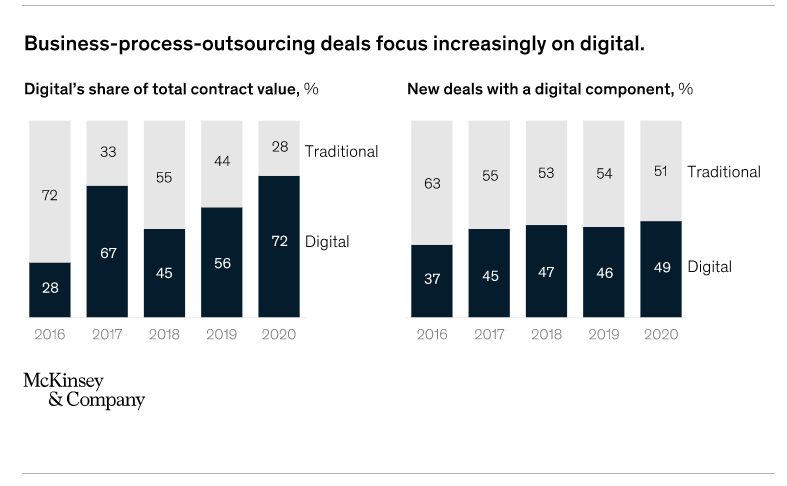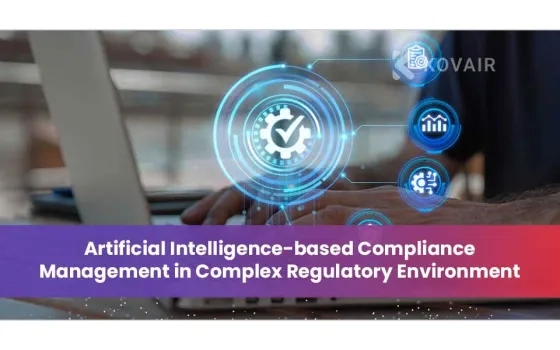“Everything that civilisation has to offer is a product of human intelligence; we cannot predict what we might achieve when this intelligence is magnified by the tools that AI may provide, but the eradication of war, disease, and poverty would be high on anyone’s list. Success in creating AI would be the biggest event in human history. Unfortunately, it might also be the last.” — Stephen Hawking
I always get excited as I read papers of my classmates and friends from my alma mater IIT (Indian Institute of Technology), as they research and enable cutting edge AI through collaboration across top academia and industry. So last year, I did an intense and interesting course on AI at MIT so that I could understand better how today's business leaders could leverage AI for the greater good of their respective businesses, as opposed to just employing an AI-bot answering consumer queries. Now that I have had time to digest and start applying some of those AI ideas into my organization, I thought it might be an opportune time to share my thoughts and experiences on how business leaders can try to apply and embed AI into their business and strategy. Hopefully, this might help drive a more practical perspective for the C suite and key decision makers in each of your own organizations.
To begin with, AI is no more a tech experiment that organizations are running on internal pilots and all of us are so used to seeing embedded AI in most of the gadgets we have in our day-to-day use. However, the reality inside our complex organizations is that all of us leaders are trying to figure AI out from a business ROI & impact perspective while doing justice to the technical complexities and limitations. But before I delve further into the mainstream application of AI towards solving the challenges inside our businesses, some of the basic principles of understanding the basics of AI & starting with a core organizational philosophy is critical.
Building an AI-powered organization
Each of us business leaders face different challenges while embarking on the path of building an AI-led organization. To start with, we need to balance the organization’s past, present and future simultaneously. In essence, we must review the historical practices to recognize the non-productive processes, manage the present to keep the critical business processes running with optimal efficiency while building a future with the zeal to innovate and evolve business processes.
Leverage AI to optimize current processes
Prioritize execution with the right technology platform, architecture, software and operational processes. Create a culture that fosters collaboration digitally. You should integrate data science into existing business processes using digital technology.
Tackle resistance to AI-driven change
A culture shift is a long process that requires transparent communication, making difficult decisions, and handling resistance effectively. Leaders should communicate the purpose, objectives and the strategy behind adopting AI.
Innovate with AI to create the future
Long-term success with AI requires continuous experimentation and evolution. Your AI strategies should evolve constantly to ensure you don’t stagnant your growth. However, it is also necessary to link your AI strategies with your core business. The strategies should develop a culture of skills, innovation and strategies.
With the above core theme on an AI-driven culture to fast pace your digital transformation, let’s dive into some technical definitions now. Essentially AI can be divided into two primary categories - AI based on capabilities and AI-based on functionalities.
Based on capability you have –
- Narrow AI – As the name suggests, it focuses on one narrow task and is limited to it only.
- General AI – aka Strong AI, general AI can understand any intellectual task that a human being can.
- Super AI – Super AI surpasses all human intelligence boundaries and can perform most human brain tasks.
Based on functionality you have –
- Reactive Machines – It works primarily with present data, and neither does it use past experiences to establish future actions nor store memories. An excellent example of this type of AI is IBM’s Deep Blue, which defeated grandmaster Garry Kasparov.
- Limited Theory – It uses past data for making decisions. This type of AI is used extensively in self-driving cars.
- Theory of Mind – It is a highly advanced form of AI, and at present, it only exists as a concept. The real-life implementation of Theory of Mind AI is Kismet, a robot head developed by a Massachusetts Institute of Technology researcher in the late 90s. This robot head is capable of mimicking human emotions and even recognizing them.
- Self-awareness – Now, at this moment, self-awareness, AI exists only hypothetically (or in Marvel Universe). But once generated, this AI will surpass the human mind in every possible sense.
AI as a differentiation strategy in the BPO/BPM Industry
Now, while investments have been made in each of the aforementioned types of AI for research, lately, the discussions have moved towards creating business value with AI and doing so ethically and responsibly. The C-suite executives must understand this technology and make it a crucial part of them Go-To-Market (GTM) strategy with complete care. On the surface, we all have come across an industrial application of AI and Machine Learning in one form or the other. From Robots (yes, this field has evolved from basic to truly smart), BOTs (Robotic process automation) to Chatbots , we all have seen some effective solutions built to cater to specific client needs. My experience primarily has been in leading Business Process Management organizations , where we essentially help redefine, improve, and transform processes and so most of the ideas I will be sharing come from the BPO/BPM industry. According to a recent McKinsey analysis in which a detailed study of 53 business-process-outsourcing deals that closed between 2016 and 2020 (a sample taken from a pool comprising more than 200 such transactions) included at least one digital component (social media, data analytics, cloud, automation, or Internet of Things)

Figure 1: Digital outsourcing: Growing fast
While the above analysis is interesting, for an industry where most of our relationships are FTE-led (Full Time Employees), cost plays a vital role in every business decision. Thus, the move to an AI-first approach needs to be evaluated in detail. Applying AI models is time-consuming, complicated, and needs significant investment in computing power. Hence in our industry, a judicious call needs to be taken by evaluating the ROI of automating with embedded intelligence and enhancing complications and costs vs. trying to solve the problem/task at hand with smart human intellect and manpower.
Nevertheless, there are some typical applications of AI in the form of Supervised/Unsupervised ML, NLP, and RPA that make a relatively strong argument in favor of AI application in our industry. Let us take a deeper dive into some of the use cases where AI has made life easy for us in the BPO/BPM industry.
Supervised/Unsupervised ML and The World of BPO/BPM
Machine Learning is an emerging AI, making it suitable for several businesses processes that can be automated for unprecedented success. Here are a few examples of such processes –
- Automated Document Processing: We process thousands, if not millions, of documents regularly using optical character recognition (OCR) tools. Artificial intelligence transforms the capabilities of these OCR tools enabling them to process images of the text and convert them into a format readable by machines. Now, suppose you can apply AI onto this advance data capture, it can save you millions in cost in reduced turnaround time while minimizing the risk of human error throughout the process. As a result, you can seamlessly handle vast volumes of invoices, claims, patient records, applications, and more.
- Service and Security: Supervised Machine learning adds a layer of protection to your customer service by identifying security risks based on past trends and anomaly detection, allowing you to make better business decisions. This can be a key differentiator for a service provider. Imagine if such an anomaly is missed due to human supervision. There can be a lot many processes where you can train ML models to do specific tasks to improve efficiencies. Above are just couple of commonly applies instances in the BPO industry.
Natural Language Processing/ Natural Language Generation
As stated in a recent publication in Harvard Business Review, “The 2020s are going to bring major advances in language-based AI tasks. GPT-3, a state-of-the-art natural language processing tool developed by OpenAI, will soon be able to produce short stories, songs, press releases, technical manuals, text in the style of particular writers, and even computer code. Cloud-AI services will enable the development of a new class of enterprise apps that are more creative (or “generative” — the “G” in GPT) than anything we’ve seen before. They will make the process of synthesizing words, intentions, and information in language cheaper, which will make many business activities more efficient, stimulating growth and innovation. In light of these coming changes, companies will not only need to rethink IT resources, but also human resources. They can begin by analyzing the bundles of tasks in current roles, uncovering specific tasks that the AI can augment, and unleashing technical and non-technical workers alike to innovate faster. The time to prepare is now.” We at Datamatics have already started successfully deploying NLP (Natural Language Processing)/NLG (Natural Language Generation) for generating natural language for machine translation, text summarization, sentiment analysis, spam detection, and information extraction. Some other key areas where we heavily employ NLP include cognitive OCR in Invoice Processing or Sentiment analysis in our Call centers. These applications help us with cost savings and drive us differentiation strategy. There are many more areas where NLP/NLG is starting to be used extensively.
- NLP in Royalty Contracts: We do royalty accounting for many of our media clients. Applying NLP helps us extract critical terms from the contracts of 100s of pages. These models can also be trained using the old agreements. Furthermore, the same can be applied to the supplier contracts or any other contract of the exact nature that the organization has.
- NLG in Budgeting & Forecasting: Natural Language Generation (NLG) is a subfield of AI that automatically interprets, analyses, and extracts relevant information from data at scale. We extensively leverage NLG in our finance & accounting work, from Accounts Receivable, Accounts Payables to budgeting & forecasting. These NLG models can be easily trained by the F&A agents & leaders based on the movement of numbers every month & quarter for creating a commentary on the trends. We have delivered massive value for our clients, and such NLG can be used smartly in areas which can enhance intelligent commentary on all trends and changes.
NLP is a fast-growing field and an important tool which can be applied in many processes relating to chatbots, virtual assistants, modern spam etc. and available in many out of the box solutions in the market which each of us leaders should actively evaluate and consider right now.
Robotic Process Automation
The next subfield in AI is where BOTs are applied inside routine processes to drive efficiency and effectiveness
- RPA For Customer Services: At Datamatics, we leverage RPA for effectively managing customer connections throughout the customer life cycle for our clients. Instead of agents spending time pulling and massaging data, we leverage BOTs to do the same. In contrast, the agents focus on analyzing and interpreting the data and applying their business knowledge to enhance the customer experience. This creates the right blend of the machine doing the routine tasks while humans bring in the interpretation and humane element to delight the customer and drive cross-sell and up-sell.
- Supply Chain: As we help our customers monitor and manage their complicated supply chains, the cross-section of data sources and systems makes the process laborious and error prone. Deployment of BOTs has helped us drive transparency and accuracy across the value chain and help our clients improve track better and even ascertain what is getting delayed and why.
Hopefully, the specifics around the different applications of AI/ML above inside the BPO industry would have given you a little better feel of some of the areas where you might want to explore applying AI/ML in your organization. I do know that most large companies are actively adding new AI led capabilities but it is for the Small & Med-sized enterprises where trying to balance growth, profitability and innovation becomes a fine balancing act for the C suite.
However, as I had shared in the beginning, for the C suite, to truly embed AI-first in your organizational culture, humane aspects need to be planned for. I talk about some of these in the subsequent sections
- An interesting outcome of Human in the loop AI: reduced fatigue & attrition: As we start building and using human-in-the-loop AI, it helps humans stop doing mundane, repetitive tasks and apply themselves to higher-end, more value-added analytical tasks. This has had and will continue to have a tremendous positive impact on the BPM industry. Our biggest asset is our workforce, which enables and drives all the client processes for the BPM industry. Attrition remains a big challenge for our industry. With AI BOTs picking up repetitive tasks and simplifying data pulls and fulfillment, employees are less bored and less fatigued doing mundane tasks.
Moreover, they can now learn to take on higher value-added, which helps increase employee engagement and satisfaction rates. We thus see reduced attrition in processes where we have introduced AI in the human-in-the-loop mode. Overall, I do believe that robots will not take your job.
Building an AI First Organization
Create the right ecosystem to ensure AI first is rewarded & sustainable:
- Democratize AI within your organization
Achieving successful AI-driven business transformation calls for a collective contribution from your entire workforce. Your leadership group, management, and employees must all be on the same page. While the entire digital transformation process might take some time, organizations can start democratizing AI within their workforce well in advance. Here are some quick tips to do so:
- Demystify and simplify AI
- Create AI advocates for query redressal
- Create a roadmap for everyone
- Educate the workforce regarding their role in digital transformation
- Create a roadmap to enhance existing processes and evolve in the future
- Highlight the business benefits
- Highlight the personal benefits
- An AI leader should be part of all your new deal solutioning: To push this AI first approach, you need to ensure that all future deals flowing into the pipeline are built with the AI ethos. So, as you approach any new agreement, make sure that an AI expert is part of the solution team. This will help you not only differentiate your solution and create an edge over the competition but also avoid the conflicts that arise when one tries to add AI post the process going live in the services provide ecosystem.
- Set up an incentive structure where leaders are rewarded for bringing in AI: Most BPM C suites like the idea of talking AI, but when there is a negative revenue impact, it gets tricky. To explain: Most of our current contracts are FTE-based (Full-Time Equivalent Employees), and as we bring in automation, there is an FTE reduction which reduces our client billing. This creates a conflict for leaders as they have to self-cannibalize their revenues if they introduce AI. It is thus critical for the C suite to take a long-term view and create an incentive structure that rewards AI introduction. The incentive structure should make a special incentive reward for AI introductions with business leaders given a chance to build a long-term growth strategy in the account using AI.
- Create an AI incubation cell: Last but not least, to keep driving new ideas on how to create AI-led solutions, organizations need to be open to investing in a small core team that is continuously working on more contemporary AI-first ideas. These ideas can be taken to market or embedded in the solution set. This team does not necessarily need to keep building new pictures but can actively work on partnerships with specialized tool players and thus keep the company portfolio unique.
Again, I want to highlight that all of the above need a mindset change and skill set change at multiple levels in our organizations. Hence the C suite plays a critical role in creating the right mindset and environment to enable this change, especially in the Small and Mid-sized enterprises
Governance and Ethics of Artificial Intelligence
Ethics essentially is a set of moral principles that govern an individual and help them discern between right and wrong. It is no different for Artificial Intelligence. AI ethics is a set of guidelines that directs artificial intelligence's outcome, implementation, and design in any field. We have all been the audience to the infamous Twitter feud between the two tech titans in, Mark Zuckerberg and Elon Musk.
While Mr. Musk, the brains behind SpaceX and Tesla, believes that artificial intelligence is "potentially more dangerous than nukes," the founder of the social network giant Facebook, Mr. Zuckerberg, in response, said, "I have pretty strong opinions on this. I am optimistic, and I think people who are naysayers try to drum up these doomsday scenarios — I do not understand it. It's negative, and in some ways, I think it is pretty irresponsible."
So, while tech bigwigs and scientists are all yet to agree upon the good that AI has to offer, they all seem to agree on the point that it is the implementation that is the key. As we implement AI, we need to be humane, respectful, and apply human livelihood and privacy principles and be careful not to use intended/unintended bias or discrimination in the ML algos that we work on. This is easier said than done, as data skews can quickly create an unintentional bias in the models and can impact outcomes. The idea is to be mindful. Stop and take stock rather than being greedy and short-sighted. Again, be human. The thing you need to be watchful of is not whether AI will surpass or become more intelligent than humans; it certainly will; it is not even whether AI will turn evil or good; we do not know it yet. It is what we as humans or the individual business leaders at the forefront of this technological development can do to ensure that AI does “better” (or at least doesn't do any bad).
To Sum Up Artificial Intelligence
The jury is still out on whether or not an AI-first approach should be the way forward for the businesses, and rightfully so. The cost-saving narratives and romanticizing of the idea of AI being the "new super employee" is just too good to ignore. However, thriving and surviving in the modern digital age means embracing the technological shifts and building an adaptive and future-ready workforce.
Overall, I believe what AI offers depends mainly on using the technology, not the other way around. As Prof Tom Malone of MIT said during the AI course “the most important kinds of intelligence in the foreseeable future won’t be AI alone, but collective intelligence that includes both people and machines…and Leaders should use AI to gain a strategic advantage” What are your thoughts on the evolution of AI into modern workspaces and the mantra of success in the whole "AI-First" race?
About the author:
Sumit Mahajan
Global Chief Sales Officer

















